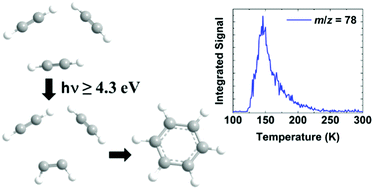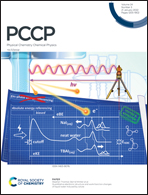Excited state photochemically driven surface formation of benzene from acetylene ices on Pluto and in the outer solar system†
Abstract
NASA's New Horizons mission unveiled a diverse landscape of Pluto's surface with massive regions being neutral in color, while others like Cthulhu Macula range from golden-yellow to reddish comprising up to half of Pluto's carbon budget. Here, we demonstrate in laboratory experiments merged with electronic structure calculations that the photolysis of solid acetylene – the most abundant precipitate on Pluto's surface – by low energy ultraviolet photons efficiently synthesizes benzene and polycyclic aromatic hydrocarbons via excited state photochemistry thus providing critical molecular building blocks for the colored surface material. Since low energy photons deliver doses to Pluto's surface exceeding those from cosmic rays by six orders of magnitude, these processes may significantly contribute to the coloration of Pluto's surface and of hydrocarbon-covered surfaces of Solar System bodies such as Triton in general. This discovery critically enhances our perception of the distribution of aromatic molecules and carbon throughout our Solar System.

- This article is part of the themed collection: 2022 PCCP HOT Articles


 Please wait while we load your content...
Please wait while we load your content...
